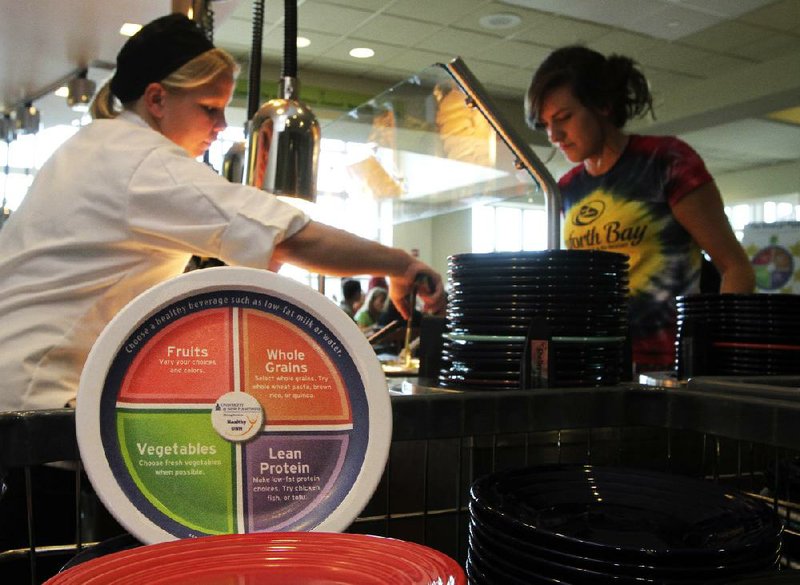DURHAM, N.H. - Two years after the federal government abandoned the food pyramid as a symbol for healthful eating and adopted an image of a plate, the University of New Hampshire has printed dietary guidelines directly on plates used in campus dining halls.
The so-called “Wildcat Plates,” named after the school’s mascot, offer a bit more detail than the “My Plate” graphic promoted by the U.S. Department of Agriculture. While the USDA image shows a plate divided into four segments labeled “fruits,” “vegetables,” “grains” and “proteins,” the Wildcat plate specifies “lean protein” and “whole grains” and offers suggestions such as “try whole wheat pasta, brown rice or quinoa.”
The plates, made of melamine, are mixed in with the university’s standard ceramic plates, with about 1,300 circulating through three dining halls that serve 12,000 meals per day.
The university has set a goal of becoming the nation’s healthiest campus by 2020 and believes the new plates are a helpful tool for students who may be away from home and making food choices for the first time, said Jo Porter, deputy director of the New Hampshire Institute for Health Policy and Practice.
She said, “Some people will use them to get kind of a sense of what a healthy plate looks like, and then ingrain that in their everyday living and not need that plate every single time.”
During one recent lunch hour, some students piled their plates with vegetables, while others reached for grilled cheese, pasta and sausage. Freshman Mike Carbone, 19, covered the fruit and vegetable portions of his plate with fried onion rings and the protein section with grilled chicken. There was a pile of chicken nuggets in the middle, and blobs of ketchup and mustard in the grain section.
“It’s not a very nutritious lunch, but I’m drinking water,” he said.
Carbone said he does try to eat healthfully but said he pays no attention to the plates.
Sophomore Nicole Grote said while she doesn’t match her food to the plates, they’ve made her more aware of portion sizes, and in general, she thinks the university is taking the right approach.
Peter Heislein, a junior, said the plates have prompted him to choose an apple instead of french fries on occasion, but they have not been a major influence on his diet. And his main reason for preferring the plates had more to do with how they emerge from the dishwasher than the message.
ActiveStyle, Pages 30 on 09/23/2013

